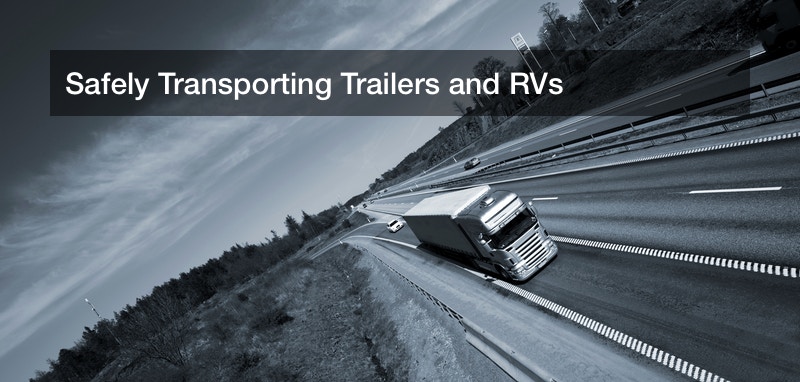
Many Americans are using pickup trucks or powerful SUVs to tow RVs or cargo trailers across American roads today, and this can be a tricky business for beginners. There are some hazards inherent to pulling a heavy, wheeled load with a pickup truck, so anyone who is new to this is advised to know how to handle all that hardware safely. The good news is that correcting trailer sway is fairly simple, and correcting trailer sway may not even require special hardware or tools. Meanwhile, electric trailer brakes can be found at a retailer or online for RVs or large towed trailers, and brake controller wiring is important for any RV towing job. Any pickup truck driver will have the right electronic brakes in place for their RV to keep the drive smooth and safe. How might this be done?
Trailer Sway
Whether for work or transporting personal items, many Americans are using pickup trucks to pull trailers behind them. This is a simple and common practice, but there are risks to doing this wrong. Trailer sway can be dangerous, and if a trailer’s momentum and inertia are moving it in unintended directions, then items in the trailer may go flying or the truck or trailer may even flip over. No one wants that. Rather, someone who is towing a trailer may follow a few simple preventative steps to correcting trailer sway or preventing it altogether. For one, the trailer should not be loaded past its intended weight capacity for any reason, and objects should not stick out of it. What is more, more weight should be in the trailer bed closer to the truck, rather than further away from it. Unusual or excessive distribution or weight may certainly cause a problem. And while driving, truck operators are urged to not drive over 55 MPH.
Correcting trailer sway is simple, too. The driver should release the gas pedal to allow the vehicle to naturally decrease its speed, and go down at least 10 MPH below the speed when the swaying first occurred. It should be noted that the driver should not speed up or hit the brakes, and instead they should allow the vehicle to slow down on its own while holding the steering wheel straight forward. Then, when possible and safe, the driver should stop and redistribute the items in their trailer to prevent further swaying.
Trailer Brakes
Trailers and trailer RVs will have their own brakes that coordinate with those of the truck towing them, and electronic trailer brake controllers will help with this. If a trailer or RV had no brakes, it would simply slam into the towing truck when it stops. While manual surge brakes exist, drivers may also take an interest in electronic brake models for their trailers and RVs. Such brake systems involve wiring that connects the trailer’s own brakes to a control box on the truck’s dashboard. The driver may modify the settings on that box if they need to.
Inertia electric brakes are one option. These brakes will use electronic sensors to track the towing vehicle’s inertia, and this coordinates all brakes. When the towing truck uses its own brakes, these electronic brakes will sense the towing vehicle’s change of inertia and apply the same changes to the trailer’s own brakes. Such brakes allow for smooth and safe stops, and they are also useful for braking on inclined planes as well as flat terrain. The towing vehicle’s inertia is affected by whether it is driving up or down a slope, and the inertia brakes can sense that and match it. This prevents the trailer from slamming into the towing truck braking down a slope, and prevents the trailer from falling too far back while braking up a slope.
Timing brakes are less precise but still useful, and are best for light loads where ultra-precise timing is not needed. These inexpensive brakes will sense when the truck’s driver has applied the brakes, then gradually apply its own brakes based on the timing setting that the driver programmed into the control box. This can make for smooth stops when lighter loads are used in flat and easy-to-navigate terrain, but for heavy loads where collisions are more likely, inertia-based brakes are the better option.

